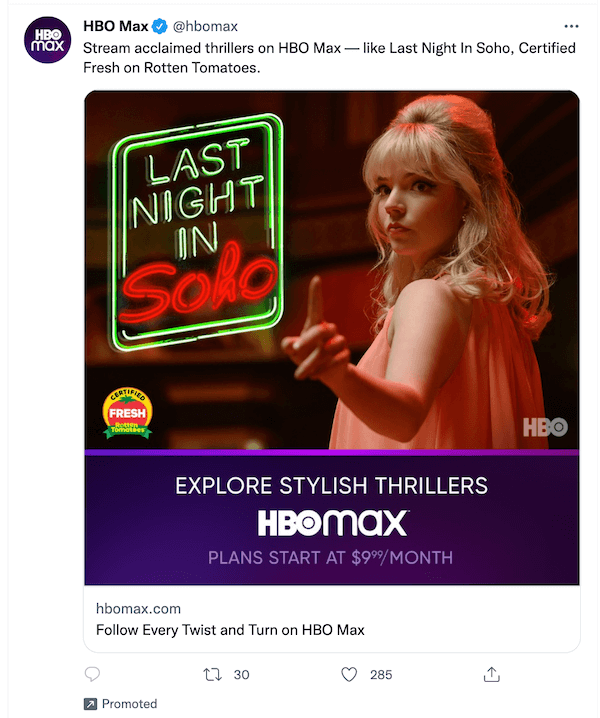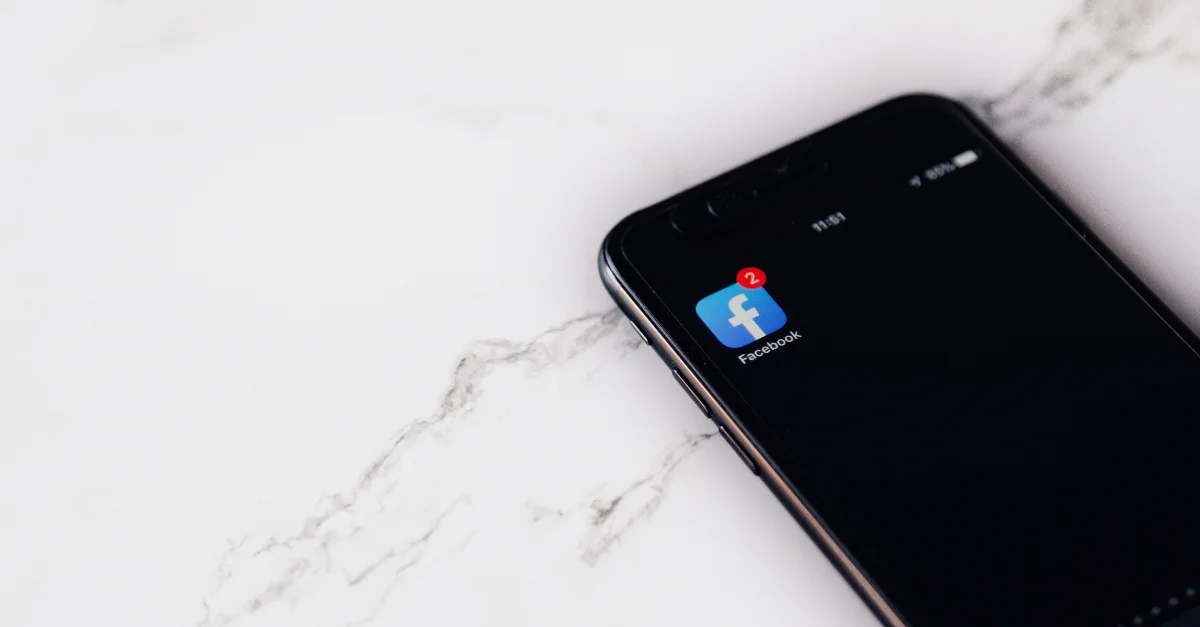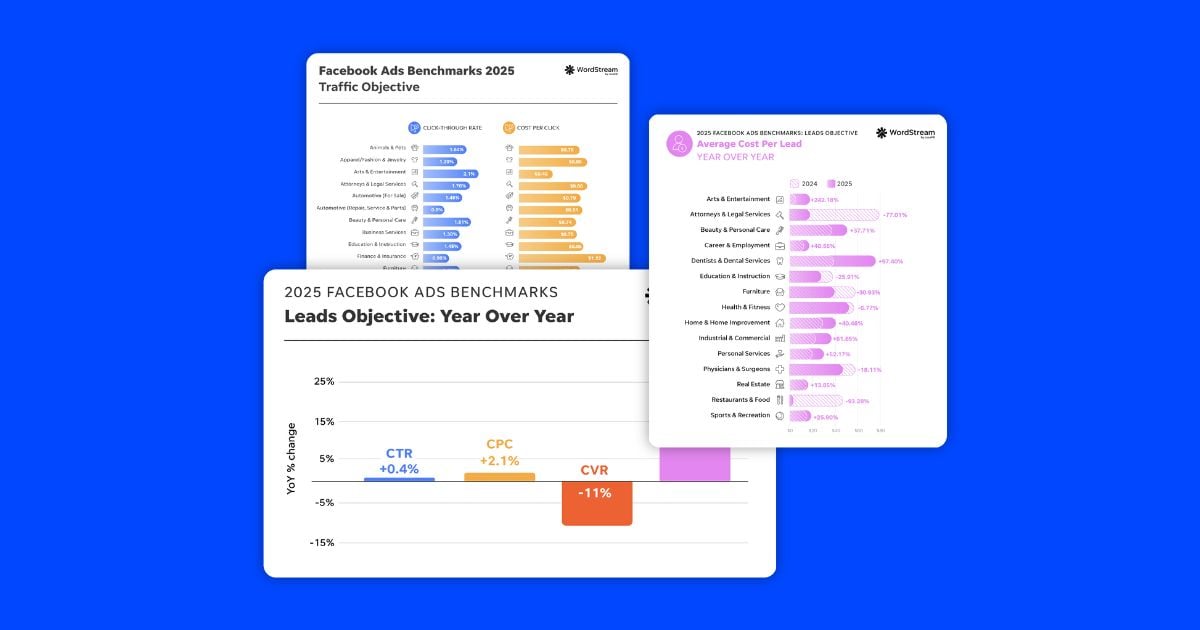Social media is one of the pillar channels in digital marketing, but what makes it different from the other pillars, like search engines and email, is that it has so many platforms within it. And not in the Bing vs Google kind of way. Each platform has massive audiences that are ripe for advertising.
In other words, social media advertising is its own beast. But once tamed and harnessed, it can be used to help your business soar past its goals. Read on to learn everything you need to know to get started and succeed with social media advertising.
Contents
- What is social media advertising?
- Benefits of social media advertising
- Social media advertising stats
- Most popular paid social channels
- How does social media advertising work?
- How much do social media ads cost?
- How to get started with social media advertising
- Social media advertising tips
- Paid social channel breakdown
What is social media advertising?
Social media advertising is a type of social media marketing where you use paid media to promote your business on any of its many channels. This media comes in many formats and placements and supports a range of creative, from images and video to immersive experiences.
It’s also referred to as paid social. Whereas with paid search where you target keywords and terms, on social, you target audiences, interests, and behaviors. Social media ads are also generally more visual and branded, and quite native to the platform—so much so that they can sometimes be hard to identify as ads.
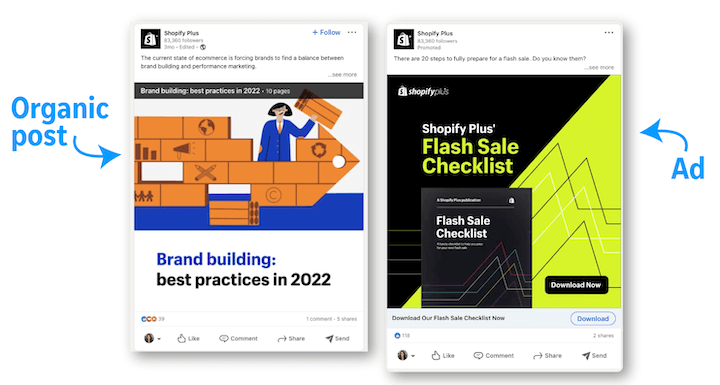
Benefits of social media advertising
As with any PPC strategy, social media advertising has lots of benefits for businesses. Here are some reasons to advertise on social media:
- Cost-effective: PPC in general yields an average 200% ROI. In addition, paid social is a lower-cost alternative to targeting your competitors' audience on search.
- Brand awareness: Not only are social media networks vast, but also, the visual ads allow you to customize them to your branding and style.
- Engagement: In addition to ad clicks, users can interact with social media ads by liking, sharing, and commenting.
- Formats: As mentioned above, social media ads support a wide range of formats and media types
- Targeting: Because users share detailed information about themselves on the platforms, social media ads allow for granular targeting.
- Not disruptive: For the most part, social media ads are often hard to distinguish from organic posts on the platforms, making them a less disruptive way to reach your audience.
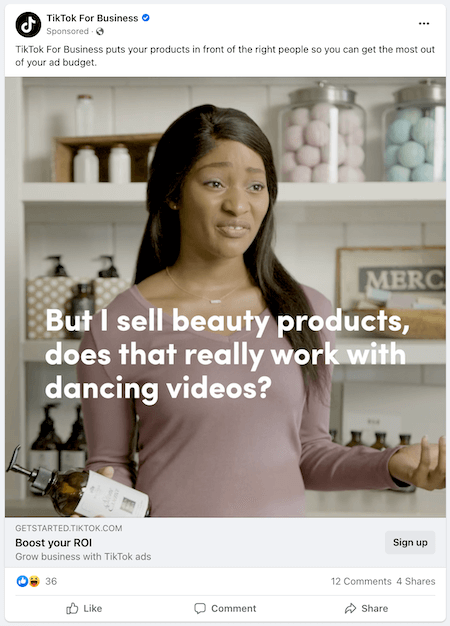
A Facebook ad for Tiktok advertising...how meta...
Social media advertising stats
To give you a sense of how big the social media ad market is, let’s take a look at a few stats:
- Social media ads are the fourth biggest source of brand discovery and the second most popular channel for online brand research.
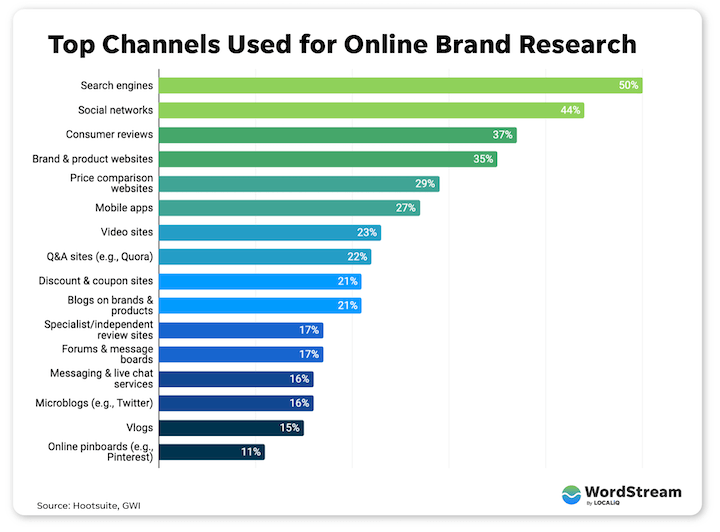
- Social media advertising is the second biggest market in digital ads ($153 billion in 2021), after search advertising.
- Google controls 28.6% of global digital ad spend, while Meta (Facebook) is not far behind at 23.7%
What are the most popular social media advertising channels?
The most popular social media platforms for advertising are, unsurprisingly the same as those for organic marketing.
These include:
- YouTube
These are also popular platforms:
- TikTok
- Snapchat
- Quora
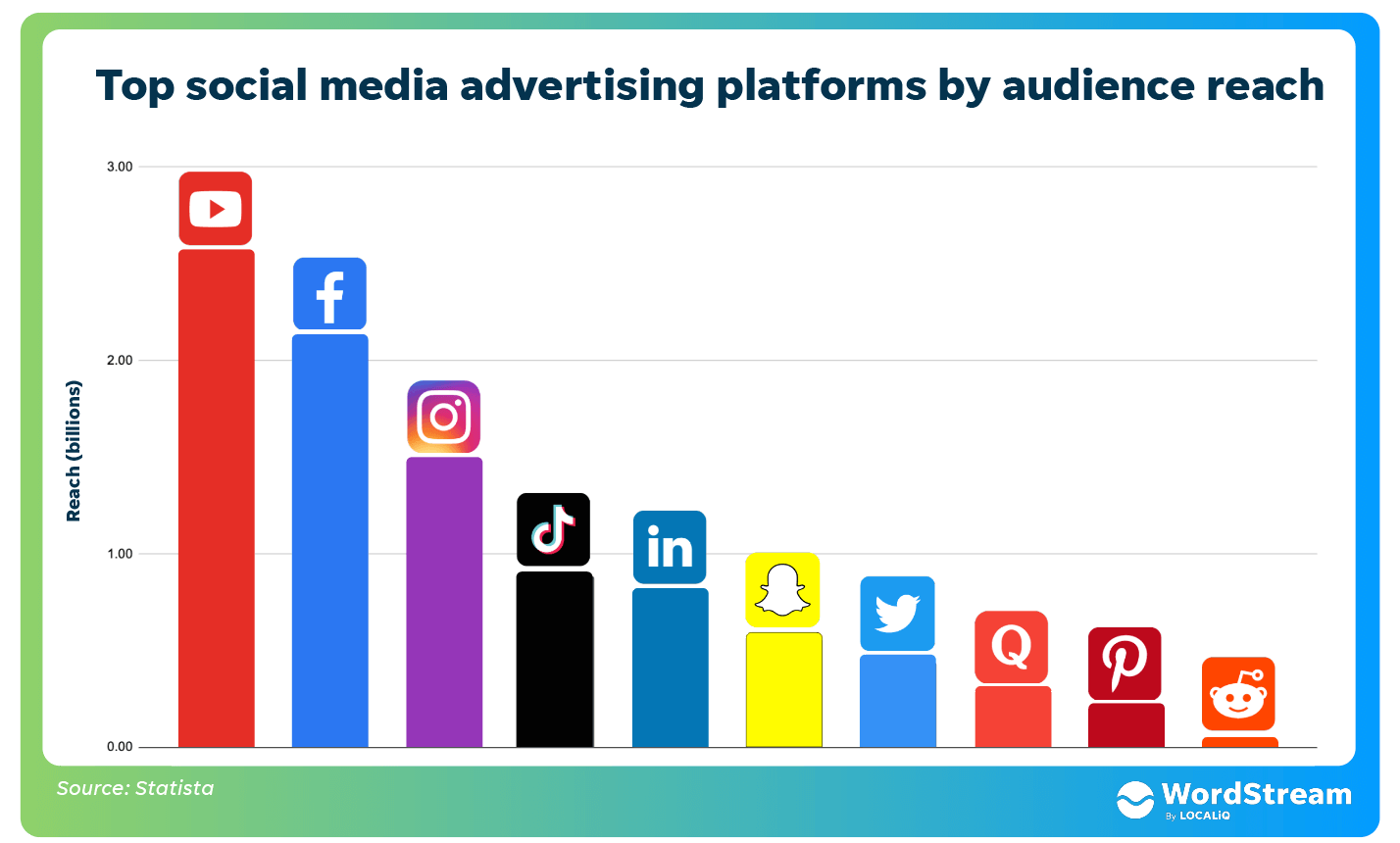
I’ll be doing a deeper dive into the top eight platforms later in this post.
How do social media ads work?
As mentioned above, while search ads operate primarily on keyword targeting, social ads are based on audience targeting. Each platform has its own features, settings, and formats, but they do share some general traits:
- Auction style: Just like the way Google Ads works, social ads are an auction-style of PPC where an algorithm determines placements and costs based on a number of criteria—including ad quality, maximum bid, and past performance.
- Campaign objectives: For most platforms, the first step in creating a campaign is to choose an objective. Usually there are three to represent top, middle, and bottom of funnel.
- Reach/awareness
- Leads/engagement
- Conversion/sales
- Targeting: You’re able to target users on each platform by demographics, interests, and behaviors as well as create retargeting and lookalike audiences. Every platform is different, but this guide to Facebook audience targeting can help you get an overall grasp.
- Account structure: While naming conventions vary for each platform, each one has an account structure that allows you to organize ads into groups and then organize groups into campaigns.
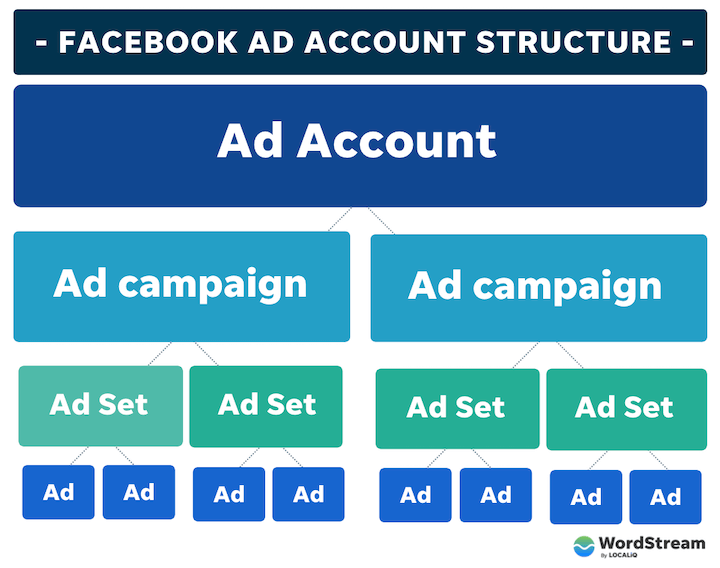
How much do social media ads cost?
Now if this wasn’t a loaded question, then I don’t know what is. Ultimately, your social media ads cost will depend on a number of factors, including your campaign objective, bidding strategy, budget, campaign optimization, industry, and more. But here are some PPC metrics you’ll see with social media advertising costs:
- Cost per click (CPC)
- Cost per 1000 impressions (CPM)
- Cost per conversion/cost per action/cost per lead
- Cost per video view
- Cost per engagement (likes, comments, etc.)
- Cost per app install
- Cost per follower
The graph below shows overall average cost per click and average cost per thousand impressions for each platform according to Statista.
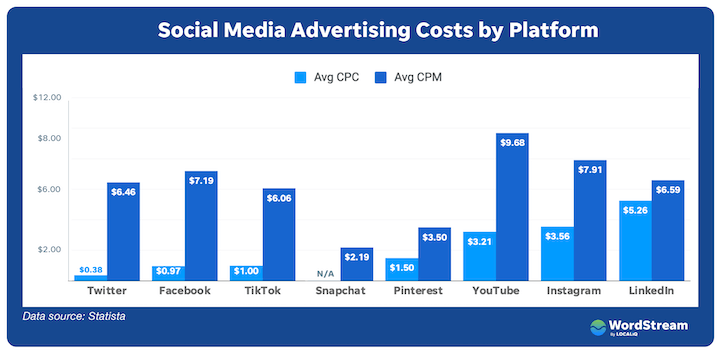
But remember, these are mainly used to give you a point of reference. What you can expect to pay will vary widely by industry, and also even by campaign type. For example, you can see in our benchmarks here that the average cost per click for home services on social is between $1-$2 while for real estate it’s lower, under a dollar.
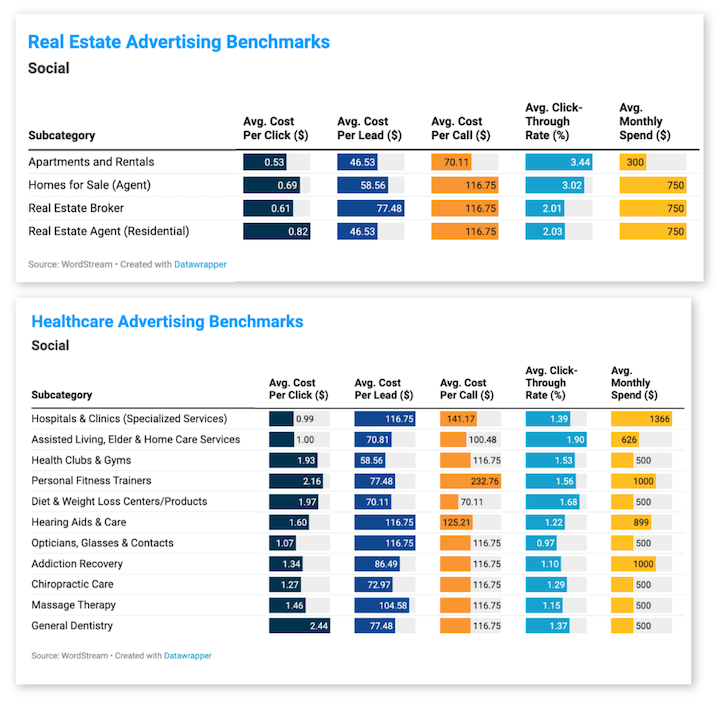
View more data on our Benchmarks Hub Page.
How to get started with social media advertising
The hardest part of any marketing strategy is actually starting. But check off these basic steps and you should have enough confidence to take the leap!
1. Understand your audience
As with any marketing strategy, you need to make sure you have a firm grasp on your target audience. Use your existing customer data, do some market research, and look at analytics from existing platforms to get a feel of what might work well. This will then help you to identify who to target, what to target them with, and when. Then, once you start running your ads and collecting data, you can get even more specific insights into who is seeing and engaging with your ads.
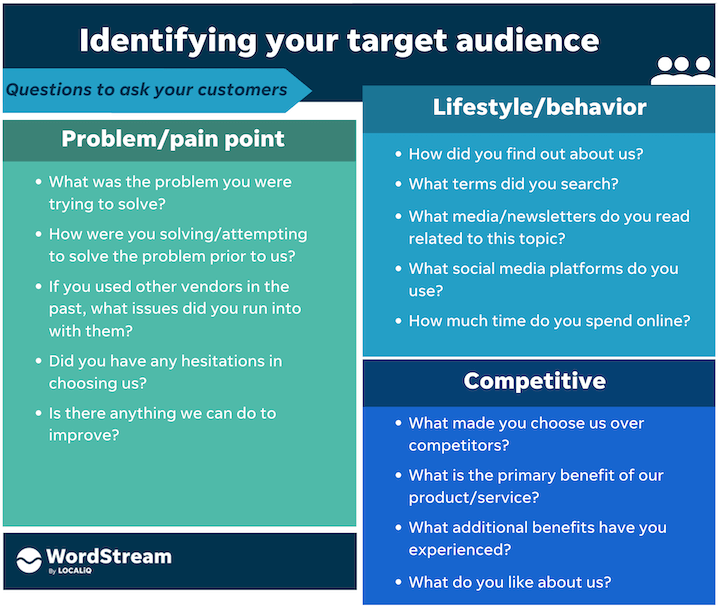
2. Choose one channel to start
A cross-channel marketing strategy is important, but you need to get the hang of the platforms before you start intertwining them. The best channel will depend on your audience, but more often than not, Facebook is a good first step.
3. Establish some general goals
What do you want to achieve with your social ads? No need to set the ol’ SMART goals here— it’s going to be hard to identify specific metrics until you actually start. But you can generally get an idea of which campaign objective you’ll start with based on your primary goal (awareness, lead generation, conversions, for example).
4. Look at benchmarks
How much you'll pay for your social ads will depend on your industry, audience, optimization strategy, and more, but it's always good to get a general point of reference before you begin so you can have some level of expectation set for budgeting.
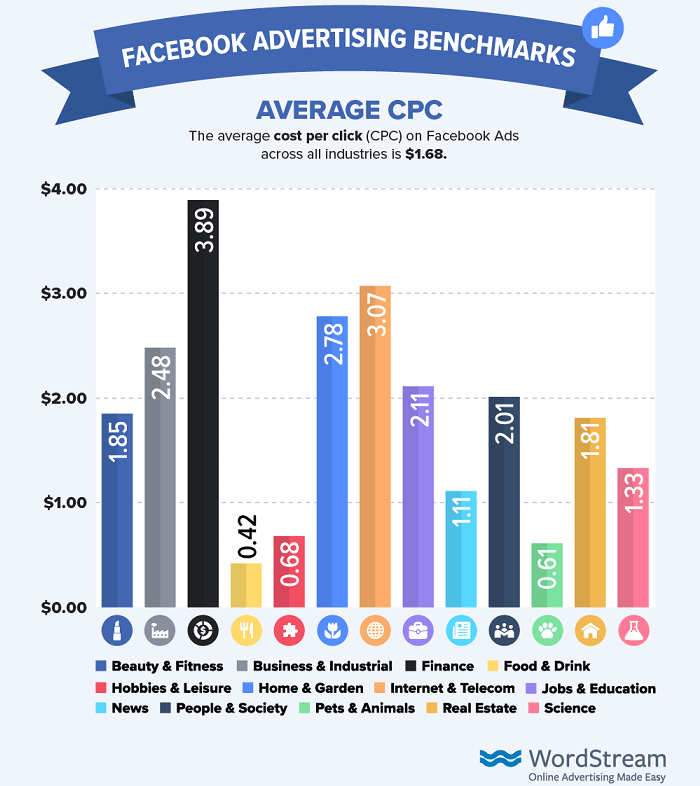
You can find benchmark data here:
- Facebook advertising benchmarks
- Healthcare social advertising benchmarks
- Real estate social media advertising benchmarks
- Home services social media advertising benchmarks.
4. Use your resources
There are plenty of free resources out there that can help you with social media advertising. We have a few roundups and even a tutorial for ya:
- The 8 Best (Free!) Facebook Ads Courses for Every Level
- The 8 Best Social Media Marketing Courses (That Aren't Boring!)
- How to Advertise on Facebook in 8 Steps
5. Just start
If you’re a small business just looking to get your feet wet, your best bet is to just start and learn from there. Social media advertising platforms also take some time to learn as well, so the sooner you start advertising, the sooner you can start collecting the data the platform needs to really start optimizing your ads.
Social media advertising tips
What will work best for each platform varies, but these general tips will help you to see success across platforms.
Lean on your organic data
Chances are (slash hopefully), if you’re looking to advertise on social media, you already have an organic social strategy going. If this is the case, lean on your organic performance to inform your paid strategy. Over time, you'll have plenty of insights from your ad data, but until then, look at audience insights, top-performing posts, low-performing posts, and engagement metrics to get a feel for the best segments of your audience to target as well as the best offers to promote.
You can use native analytics within each platform or any social media reporting tool to lean into these insights.
Use user-generated content
In addition to using your most engaging posts, you’ll also want to take a look at top-performing user-generated content as your ad creative. These make for great testimonial ads which combine relatability with reviews to make for reliable, ROI-worthy (and totally rad) ads.
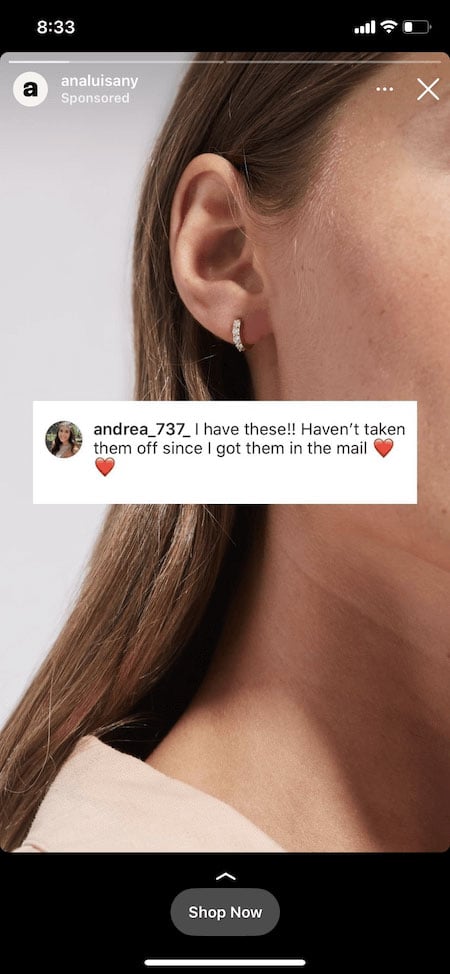
Keep mobile in mind
This one probably goes without saying, but it’s still worth stressing: keep mobile in mind. Most social media platforms are accessed mainly on mobile (some are mobile-only). Of course, formatting your ads for mobile takes care of itself when you follow the image specs. But also, have a mobile mindset when you think about what offers you’re promoting and when you’re delivering your ads.
For example, if your audience is young city-dwelling professionals, advertising a PDF guide on LinkedIn might not make sense during morning commute time when they're accessing the platform on their phone. It might make more sense to run the ad during a time in which they'll see it on their desktop.
A/B test
You should always be trying out different versions of your ads to see what performs best. With A/B testing, you'll change only one variable—like the copy, or the image, or in the case below, the image style.
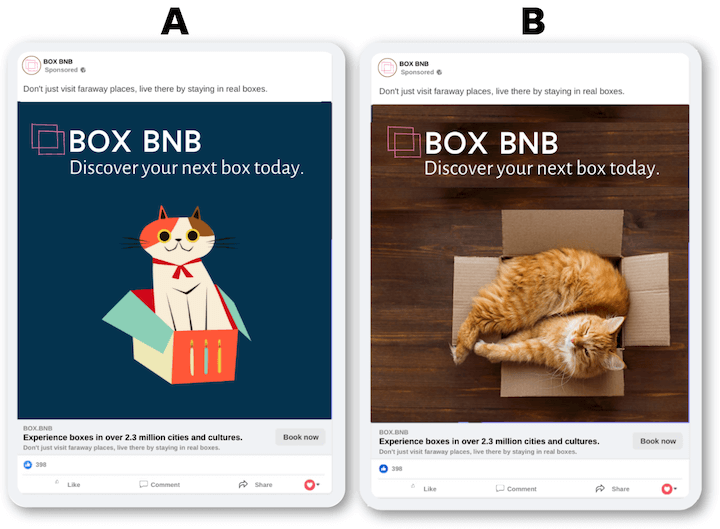
If there was an Airbnb for cats...
Use multiple campaign types
As I mentioned earlier, each paid social platform offers multiple objectives to choose from for your campaign—not just because different businesses have different goals (app installs vs store visits, for example), but because within your funnel you'll also have different goals. You may want to generate leads with a top-of-funnel offer for one campaign, but retarget website visitors with something more bottom-funnel in another. So create multiple campaigns and use the different objectives available to you to create a full-funnel strategy. This will ensure you get the most out of each platform.
Pair with search
I touched a bit on cross-channel marketing above. Once you've gotten the hang of your social media advertising strategy, start looking at how you can use your search and social ads together. For example, you might take the top-performing keywords from your Google Ads data and use them in your Facebook ad copy, or target a particular Facebook audience based on how they engaged with a search ad offer.
Don’t let your creative get stale
Not only are social media feeds highly visual, but they’re also constantly getting refreshed. It’s more important than on any other platform that your ad creative stays fresh.
The top Social media advertising channels compared
To help you decide which channels may be best for your strategy, read on for a breakdown on each one.
Table of contents:
Facebook advertising
Snapshot
Facebook’s advertising audience size is 2.11 billion, which is 26.7% of the total population. Its biggest demographic is 25-34 but it has the largest representation for the 65+ age group. The average cost per click for Facebook is $0.97 (the second lowest after Twitter) and the average cost per thousand impressions (CPM) is $7.19.
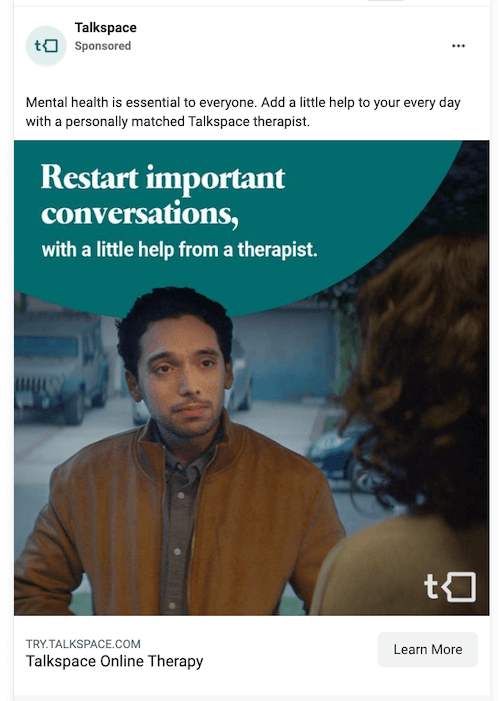
Find lots more Facebook ad examples here.
Facebook ad types
- Image
- Video
- Carousel
- Instant experience
- Collection
- Boosted posts
- Facebook Shops
Pros & cons
While creating an ad on Facebook is fairly straightforward, setting up an ad account is a super confusing process. Luckily, our Facebook ads tutorial walks you through all of that.
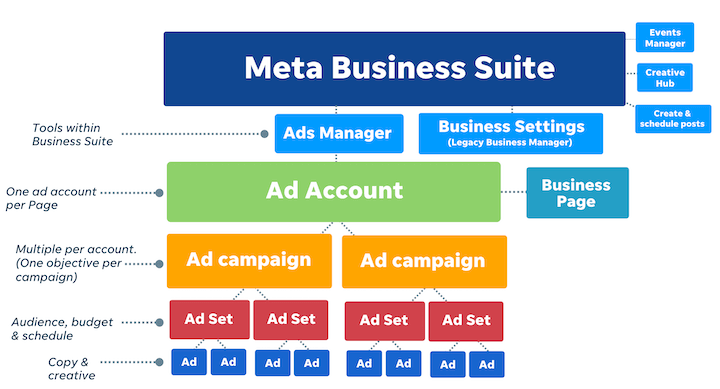
Also, the more effective a paid media channel is, the more competitive it gets, and Facebook is no exception. Nevertheless, Facebook is the most popular social media platform in the world and has the most even age distribution of all its counterparts. And while iOS updates and privacy changes have created certain limitations, Facebook ad targeting is still unmatched. Plus, it's working on ways to preserve reporting and targeting integrity such as through the Conversions API. To get started, use the Facebook ads tutorial linked above.
Instagram advertising
Snapshot
The Instagram advertising audience size is 1.48 billion, which is 18.70% of the population. Its biggest demographic is in the 18-34 year range. The average cost per click for Instagram ads is $3.56, and the average CPM is $7.91.
Types
Instagram ad types include:
- Photo
- Video
- Carousel
- Collection
- Reels
- Stories
- Explore
- Pros and cons
Pros & cons
While Instagram ads are typically more expensive than Facebook ads, engagement on Instagram is also higher. Plus, it’s the top social media platform used by consumers to follow brands, so intent is higher. It’s also an excellent advertising channel for ecommerce businesses.
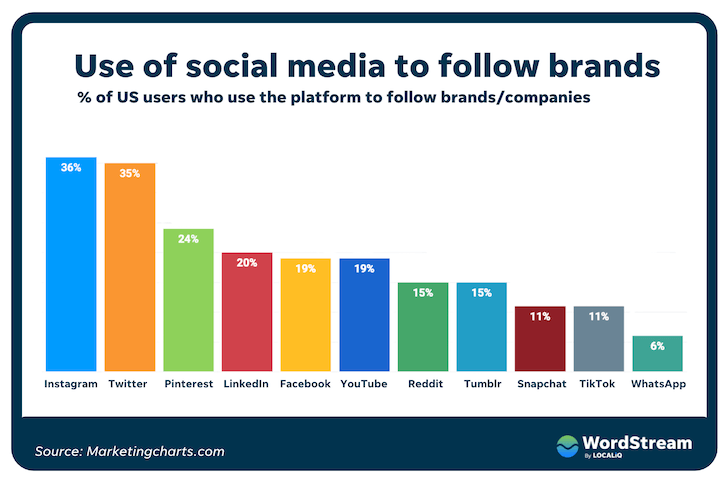
Get started with our guide to advertising on Instagram or our how-to on selling on Instagram. Take your pick!
YouTube advertising
Snapshot
The YouTube advertising audience is the largest of all the social media platforms at 2.56 billion people. That's 32.4% of the population, with the biggest age group being 25-34. Average cost per click for YouTube ads is $3.21, and average CPM is $9.68.
Types
There are six main YouTube ad formats.
- Skippable in-stream ads
- Non-skippable in-stream ads
- Bumper ads
- Outstream ads
- Masthead ads
- Overlay ads
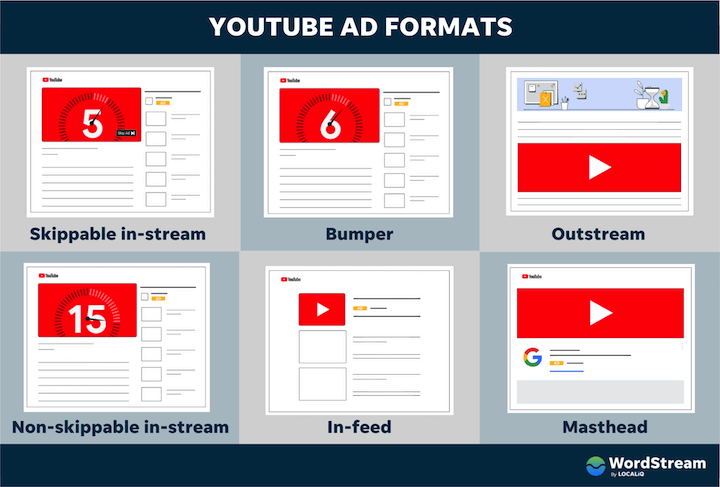
Pros and cons
While video ads are often the most engaging and effective, it can be hard to get your video in front of users on other social media platforms where users are scrolling mindlessly and often watching videos on mute. But on YouTube where video is the expectation, you have an advantage. Even still, video ads can be disruptive and creating video ad content is often resource-heavy.
But at the end of the day (or rather all day), users spend the most time on this platform (tied with TikTok) at a whopping 45 minutes a day—so you have high chances of reaching your target audience.
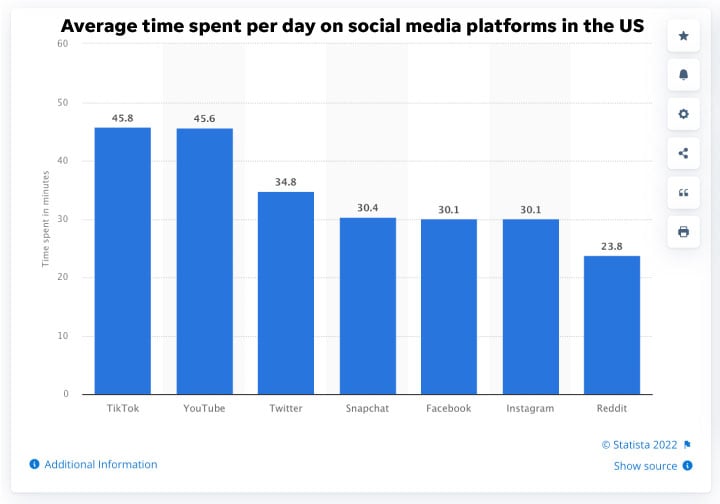
To get started with YouTube ads, head on over to our handy YouTube advertising beginners guide.
Performance snapshot
The LinkedIn ads audience is 808.4 million people, which is 10.3% of the population. The biggest demographic on LinkedIn is 25-34 years, the average cost per click is $5.26 and the average CPM is $6.59.
Types
LinkedIn has four core ad types...
- Sponsored Content
- Sponsored Messaging (Sponsored InMail)
- Text Ads
- Dynamic ads
...but don't let that fool you. Formats include carousel, conversation, follower, spotlight, job, lead gen forms, message, single image, single job, text, and video. Do your permutational math and that's...a lot of ad types.
Pros & cons
LinkedIn is notorious for being an expensive advertising platform (its average CPC is four to five times that of Facebook 😱 ), and a common pain point among advertisers is the lack of features that other platforms have, like rule-setting capabilities and optimizing delivery for a specific action.
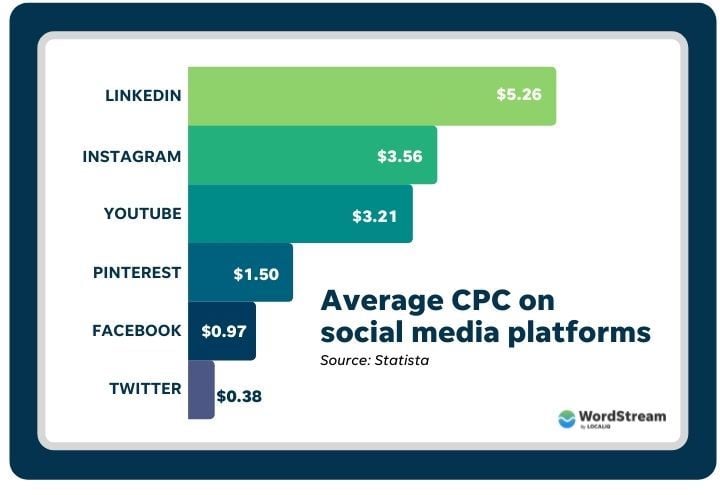
Nevertheless, LinkedIn offers some pretty impressive audience insights and targeting options, you can also target LinkedIn audience on Bing. This makes it especially useful for B2B advertisers looking to reach the decision-makers in their audience.
Ready to get started? Learn more with our LinkedIn advertising cheatsheet as well as these LinkedIn ad optimizations.
Twitter advertising
Snapshot
The Twitter advertising audience size is 436.4 million people, which is 5.5% of the total population. Average cost per click on Twitter is $0.38 (the lowest of all the platforms) and average CPM is $6.46.
Types
Twitter has five main advertising categories:
- Promoted ads:
- Image
- Video
- Carousel
- Moments
- Text
- Follower ads
- Amplify
- Takeover
- Live
Pros & cons
If Twitter is right for your audience, it’s a good option because there is less competition so impressions and clicks can cost pennies. The Twitter audience also is more affluent, making them good candidates for converting into customers. But Twitter advertising is not without its shortcomings. Common complaints involve conversion tracking, analytics, and setup. To end on a positive note, however, people spend 26% more time viewing ads compared to other networks.
If you're ready to launch into the Twitterverse, the Twitter for Business help center is super, well, helpful.
Snapshot
Pinterest’s advertising audience side is 225.7 million, which is 2.90% of the population. Average CPC is $1.50 and average CPM is $3.50.
Types
Pinterest ad types include:
- Idea Pins
- Try on product Pins
- Collection
- Carousel
- Promoted Pins
- Shopping ads
Pros & cons
In addition to the Pinterest audience being rather limited, most advertisers find they have less control over ad placements here and that they have to refresh their creative often to prevent ad fatigue. But Pinterest ads can be worth trying for the right niche, and great for businesses that have high-quality imagery—especially images of their work.
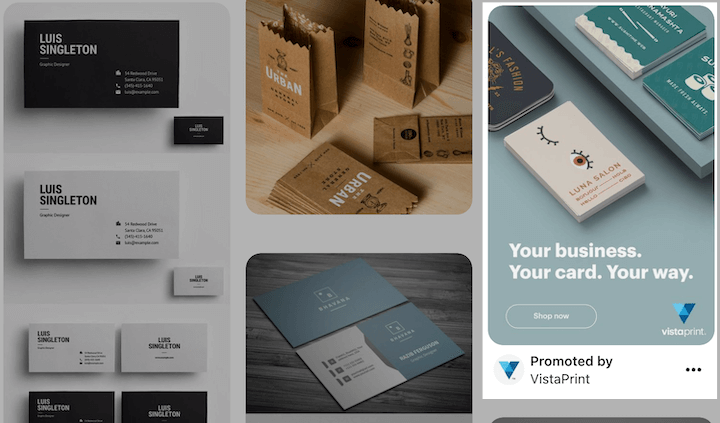
Get started with our Pinterest advertising cheatsheet.
TikTok
The TikTok advertising audience size is 88 million, which is 11.20% of the total population. The largest age group is 18-24, the average CPC is $1.00 per click and the average CPM is $6.06.
Types
TikTok ads come in four forms:
- Image
- Video
- Spark
- Collection
Pros & cons
As mentioned in the YouTube section, creating video content isn't always easy, and expectations are higher on video-only platforms. TikTok ads also require a minimum $50/day per campaign or $20/day per ad group. But given the popularity of the platform, and the 45 minutes a day that users spend on it, this is a great option for businesses that have a TikTok-inclined audience.
You can get'er going with our quickstart guide to TikTok advertising or learn more in our TikTok vs Facebook ads comparison.
Snapchat
Snapshot
The Snapchat advertising audience size is 557.1 million, which is 7% of the population. Its largest demographic is 18-24 years, but it has the largest representation for younger age groups. Average CPM on Snapchat is CPM $2.19, average cost per swipe up is $0.57, and average cost per action is $5.53.
Types
Lots of Snapchat ad types to work with:
- Snap
- Story
- Filters
- Geo filters
- Memories
- Snap Map
- Lenses
- Commercials
Pros & cons
Snapchat ads can be costly, especially since they don't always yield an immediate ROI. Plus, you need to be able to produce unique content to meet user expectations. The good news is, if you get it right, the full-screen, immersive experience can be impactful and studies show that while Gen Zers spend less time watching ads, they have higher ad recall.
Ready to start? You know the drill by now. Check out our easy guide to advertising on Snapchat.
Final tips to get started with social media ads
By now, you have everything you need to get started with your paid social strategy. I will leave you with some final tips. The first is to make sure you're investing enough in your campaigns, as underbudgeting can limit your ads' performance and invalidate your investment. The second is to give the platforms time. Machine learning plays a major role here, so give each platform a chance to collect the data it needs to start optimizing delivery. And finally, report on your ads and perform periodic audits to make sure your accounts are optimized. You can always use our Free Facebook Ads Performance Grader if you're advertising on Facebook. Or check out our full range of digital marketing solutions to find out how we can help you get started with social media marketing and advertising.

